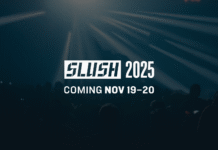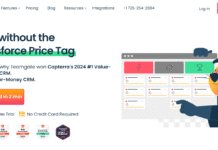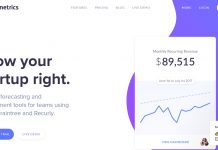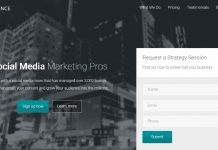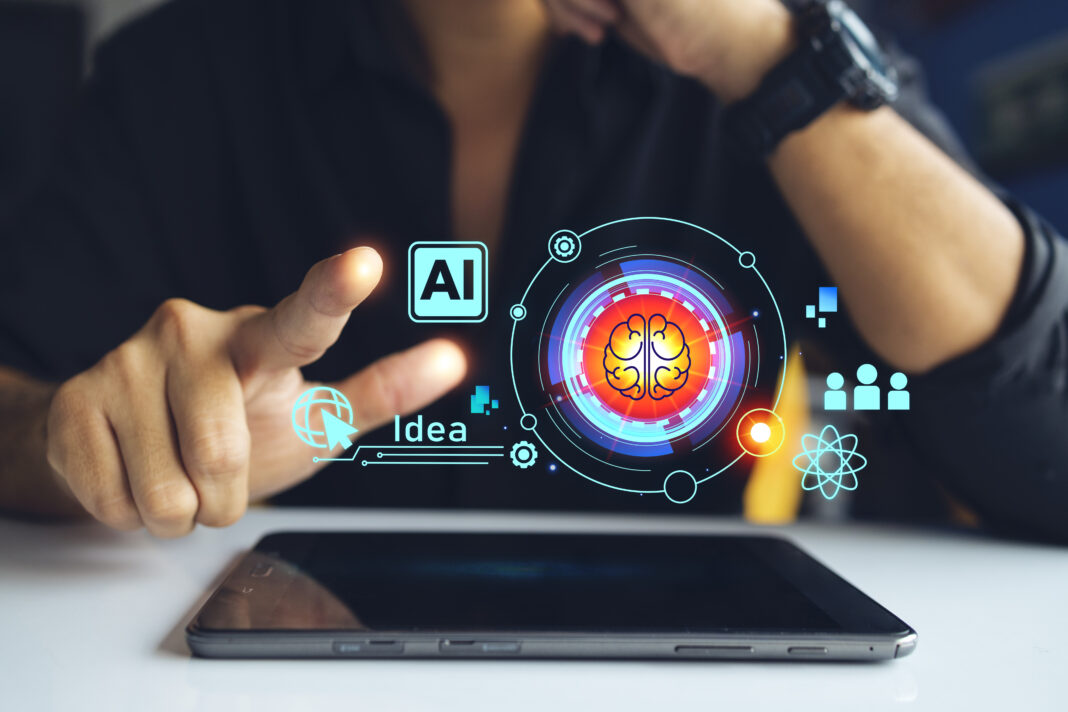The concept of MVP development has become a foundational strategy for startups seeking to move from idea to market entry with reduced risk, lower investment and faster validation. In 2026, the landscape surrounding product creation is substantially influenced by artificial intelligence, automation, data-driven workflows and accelerated competitive environments. As a result, MVP development has evolved into a more structured, analytical and iterative discipline. This introduction presents the core reasoning behind the growing importance of MVP development for startups and explains why early-stage founders require a rigorous approach when turning conceptual ideas into functional market offerings. The introduction highlights the increasing pressure on startups to reach product-market fit quickly and underscores why a systematic MVP process is now essential for navigating modern innovation cycles.
Understanding the Strategic Role of MVP Development
This section clarifies the strategic role of MVP development in early-stage ventures. Startups often face significant uncertainty regarding customer needs, market demand, pricing and long-term scalability. MVP development provides a structured framework to test assumptions using minimal resources while generating meaningful user insights. Startups that engage in disciplined MVP development avoid building unnecessary features or committing to complex architectures prematurely. By validating core hypotheses early, founders reduce the likelihood of costly pivots. This approach is particularly vital in 2026, when competition across digital markets is intense and user expectations shift rapidly due to fast technological advancements. Therefore, startups that execute MVP development strategically achieve clearer market signals and improved decision-making.
Defining an MVP Within the Context of 2026
This paragraph explains the definition of an MVP as it applies to the 2026 business environment. MVP development is not about delivering an incomplete product but about releasing the minimal version that demonstrates the primary value proposition. The MVP must contain only the essential features that allow users to accomplish the intended action. In 2026, AI enhanced workflows, automated tools and integrated cloud solutions make it easier to build MVPs faster while maintaining reasonable quality. However, this also increases the risk of unnecessary feature expansion due to available automation. Therefore, founders must be intentional about selecting only the features that support their core value hypothesis. The definition of MVP development continues to emphasize minimalism, focus and measurable outcomes.
The Importance of Problem Identification
This section describes problem identification as the first operational step in MVP development. Founders must articulate the core problem their startup aims to solve, identify who experiences this problem and define the circumstances under which users feel the pain point most acutely. In 2026, this stage benefits from advancements in AI-based customer research tools that analyze large sets of user conversations, market signals and behavioral patterns. Despite these technological enhancements, the foundational requirement remains unchanged: startups must ensure that the problem is significant enough to justify a dedicated solution. Without a clear problem definition, MVP development becomes unfocused, leading to weak validation and misaligned product features.
Understanding the Target User Segment
This paragraph expands on the importance of clearly defining target users. MVP development requires founders to focus on a specific user segment rather than broad audiences. By narrowing the audience, founders can test assumptions more effectively and obtain clearer behavioral data. In 2026, segmentation tools powered by AI allow startups to categorize users based on psychographics, purchase patterns, engagement behavior and expressed needs. This improves the precision of MVP development by ensuring the early product is aligned with users most likely to adopt and provide feedback. A focused target segment contributes to higher-quality validation and supports later expansion into broader markets.
Conducting Market and Competitive Analysis
This section addresses the necessity of market and competitive research in MVP development. Startups must analyze the current market size, growth projections, customer trends and competitor offerings. In 2026, the availability of real-time market analytics, AI-driven competitor mapping and predictive insights helps founders identify opportunities faster. However, despite enhanced tooling, founders must understand the deeper implications of market dynamics. Effective MVP development requires exploring unmet needs, analyzing user dissatisfaction with existing solutions and identifying innovation gaps. The outcome of this stage is a clearer understanding of how the MVP can create differentiated value during initial launch.
Prioritizing Essential Features
This paragraph describes the feature prioritization process. MVP development requires selecting the smallest set of features that allow users to experience the core value proposition. In 2026, founders often employ structured prioritization frameworks such as MoSCoW, Kano and value-effort analysis. These frameworks prevent overbuilding and help maintain a narrow feature scope. Additionally, AI-driven product tools can analyze market demands and recommend feature subsets based on predicted user interest. Still, founders must exercise discretion and avoid the temptation to include advanced capabilities prematurely. The strength of MVP development lies in delivering only what users need to validate the core idea.
Designing User Flows and Early Interfaces
This section focuses on the importance of initial design activities. Before development begins, MVP development requires that user flows, wireframes and interface models be created to visualize how users will interact with the product. In 2026, AI-assisted design platforms can generate wireframes, suggest UX improvements and test usability patterns with simulated user behavior. These capabilities speed up design processes but do not replace human judgment. Founders must ensure that the early design reflects the essential user journey and that the visual structure is accessible, intuitive and aligned with the MVP’s functional goals.
Selecting the Appropriate Technology Stack
This paragraph explains the significance of choosing the correct technology stack during MVP development. Startups must balance speed, cost, scalability and development flexibility. In 2026, the most common technology stacks for MVP development include cloud-based serverless architectures, low-code systems, full-stack JavaScript environments, AI-enabled backend APIs and integrated mobile frameworks. Startups should select tools that enable quick iterations and minimal technical overhead. The choice of stack should support future scaling without requiring substantial rebuilding. The combination of rapid development capabilities and long-term flexibility is a core requirement of modern MVP development.
Implementing Agile Development Practices
This section outlines the role of agile methodologies in MVP development. Short development cycles, continuous feedback loops and incremental improvements allow startups to refine features quickly based on user data. In 2026, integrated AI development assistants help automate code generation, testing and deployment. Despite enhanced automation, the principles of agile development remain centered on transparency, collaboration and iteration. Founders must ensure that development teams maintain clear communication and adjust feature priorities in response to validated insights. Agile processes strengthen the effectiveness of MVP development and allow startups to respond dynamically to market signals.
Testing, Quality Assurance and Early Feedback
This paragraph describes the testing phase within MVP development. Quality assurance ensures that users encounter minimal friction when interacting with the MVP. In 2026, automated testing tools, AI bug detection systems and predictive failure analysis significantly improve reliability. However, human-driven usability testing remains essential because it reflects real-world user behavior. Early feedback from initial users provides data on performance, functionality gaps and user sentiment. This stage highlights the iterative nature of MVP development, as insights gathered during testing guide subsequent versions and refinements.
Launching the MVP and Establishing Measurement Frameworks
This section explains the importance of a structured launch strategy. MVP development culminates in a controlled release to a limited audience, allowing startups to observe actual user behavior. Startups must define measurement systems before launch, including activation metrics, engagement levels, retention, conversion rates and feedback signals. In 2026, analytics platforms equipped with AI provide more precise behavior tracking and predictive insights. These systems allow founders to measure the effectiveness of MVP development and understand whether the product is progressing toward product-market fit.
Incorporating AI Into the MVP Development Lifecycle
This paragraph explores how AI influences the full lifecycle of MVP development. From research and design to testing and iteration, AI tools enhance speed, accuracy and efficiency. AI automates user research, suggests design improvements, analyzes market opportunities and accelerates deployment. Despite these capabilities, the strategic principles of MVP development remain unchanged. Founders must interpret AI outputs critically and use these tools as enhancements rather than replacements for product judgment. AI strengthens MVP development but should not dominate decision-making.
Understanding the Role of Marketing in MVP Validation
This section describes the connection between marketing and MVP development. A successful MVP requires a structured go-to-market plan that communicates the product’s core value to early adopters. Marketing insights play a critical role in demand validation, customer discovery and audience engagement. For further insights into marketing practices beneficial for startups, readers can explore relevant resources. Incorporating structured marketing strategies ensures that MVP development not only delivers a product but also initiates the process of building early traction.
Analyzing User Data After Initial Release
This section examines the importance of user data analysis after the MVP has been launched. MVP development requires founders to interpret behavioral data collected during early user interaction. In 2026, enhanced analytics platforms offer granular insight into user actions, session patterns, engagement depth and abandonment points. Startups must evaluate this data to assess whether the MVP is solving the intended problem and whether users are adopting the core features. Meaningful insights emerge from observing what users do rather than what users say. Therefore, founders benefit from establishing structured dashboards that track activation, retention and conversion. This phase transforms raw observations into actionable knowledge that guides the next iteration of MVP development.
Evaluating Product Market Fit Signals
This paragraph describes the importance of detecting early signals related to product market fit. MVP development is designed to uncover whether the value proposition resonates with the target audience. In 2026, product market fit is evaluated through both qualitative and quantitative indicators. Metrics such as user retention, referral tendencies, usage frequency and willingness to pay help determine traction. The table below provides a structured summary of typical product market fit benchmarks used by startups in 2026. These indicators help founders assess the strength of early market response and determine whether the MVP development phase has successfully validated the core value hypothesis.
Product Market Fit Benchmark Table (2026)
| Metric Category | Industry Benchmark | Interpretation |
|---|---|---|
| Week 1 retention | 35 percent to 55 percent | Indicates early product engagement strength |
| Activation rate | 45 percent to 65 percent | Measures how effectively users reach the core action |
| WAU to MAU ratio | 0.25 to 0.40 | Shows weekly engagement consistency |
| Willingness to pay | 10 percent to 25 percent | Reflects perceived value of the MVP |
| Referral intent | 20 percent to 30 percent | Suggests organic word of mouth growth potential |
These quantitative indicators, when combined with qualitative user interviews, help founders interpret product market fit signals with clarity and precision. A strong product market fit signal indicates that the MVP development process has successfully validated the early value proposition, while weaker signals may require additional refinement or targeted pivots.
Learning From User Feedback and Behavioral Patterns
This section focuses on integrating user feedback into the next cycle of MVP development. Successful startups view feedback as a critical resource that enriches decision-making and validates assumptions. In 2026, AI enabled tools help categorize user comments, highlight recurring themes and detect pain points automatically. However, founders must rely not only on automated interpretation but also on direct engagement with users. By identifying friction points, analyzing behavior gaps and understanding why users abandon certain flows, startups refine the MVP in a focused and data-informed manner. User feedback remains a foundational component of the continuous improvement process.
Establishing Iteration Loops
This paragraph discusses the establishment of iteration loops as a core element of MVP development. Iteration loops allow startups to refine features, eliminate inefficiencies and introduce enhancements systematically. In 2026, agile iteration is supported by integrated development environments that automate deployment, version tracking and testing. However, iteration loops require strategic discipline. Founders must prioritize improvements based on validated evidence rather than personal preference. The objective is to evolve the MVP gradually while maintaining alignment with the original value proposition. A structured iteration process ensures that the product becomes stronger with each cycle.
Scaling the MVP Toward a Full Product
This section explains how startups transition from MVP development toward full product development. Once the MVP demonstrates traction, startups must consider scale, performance and long-term product architecture. In 2026, scalable cloud infrastructures, modular API driven systems and distributed data pipelines enable startups to expand capacity without rebuilding core systems. The transition from MVP to a full product involves refining design, expanding feature sets, optimizing backend systems and preparing for increased user volume. The objective is to maintain the agility of the MVP phase while strengthening the technical and operational foundation necessary for long term growth.
Expanding Feature Sets Based on Validated Insights
This paragraph focuses on how startups expand feature sets responsibly after completing the initial MVP development phase. Feature additions should be grounded in validated user behavior and well documented evidence. Startups often employ a phased feature release plan that prioritizes enhancements providing measurable value. In 2026, AI supported roadmapping tools help founders predict which features are likely to improve retention or conversion. Nonetheless, founders must consider the long term implications of each feature to avoid unnecessary complexity. The expansion stage should remain aligned with the strategic direction established during MVP development.
Creating Sustainable Monetization Models
This section discusses the importance of monetization planning as startups move beyond MVP development. Monetization validates whether users are willing to pay for the product, a critical component of product viability. In 2026, startups frequently test multiple pricing models including subscription, freemium, usage based and tiered options. Data driven pricing experiments help determine the optimal structure for different customer segments. A successful monetization strategy ensures the long term sustainability of the startup and further validates the effectiveness of the original MVP development approach.
Enhancing User Experience and Interface Design
This paragraph highlights the growing importance of UX and interface refinement following MVP development. In 2026, user expectations for visual quality, ease of interaction and speed of navigation continue to rise due to the influence of global platforms. Therefore, startups must improve visual design, interaction flow and responsiveness to elevate the product beyond its initial functional state. AI driven design assistants provide layout recommendations, accessibility evaluations and predictive usability insights. However, final design decisions require human interpretation to ensure emotional resonance and contextual relevance. Enhanced user experience contributes significantly to long term retention and satisfaction.
Strengthening Technical Infrastructure
This section analyzes the infrastructure enhancements required after successful MVP development. As user volume increases, the product must support greater data throughput, faster load times and consistent uptime. In 2026, serverless architecture, container orchestration and distributed computing frameworks enable startups to scale efficiently. Founders must consider database optimization, load balancing and enhanced security measures. Infrastructure maturity ensures that the product remains reliable even under growing demand. Technical stability plays an essential role in shaping user trust and supporting broader product adoption.
Building a Long Term Product Roadmap
This paragraph examines the need for a structured product roadmap beyond the MVP phase. MVP development focuses on testing assumptions, while long term roadmapping highlights future goals, milestones and strategic growth initiatives. In 2026, roadmapping tools integrate AI driven predictions to estimate development effort, market risk and competitive pressures. The roadmap should outline feature expansions, infrastructure plans, monetization improvements and user acquisition strategies. Clear planning supports alignment across teams and ensures cohesive long term execution.
Optimizing Customer Support Systems
This section explains why customer support systems become more important as the product evolves beyond MVP development. Early stage users often require guidance, troubleshooting and explanations. In 2026, AI powered chat systems, automated onboarding flows and predictive help modules streamline support operations. However, human support remains necessary for handling complex concerns. Effective support systems enhance satisfaction, reduce churn and contribute to positive product reputation. During this stage, startups must balance automation and personalized care.
Refining the Go To Market Strategy
This paragraph highlights the refinement of the go to market strategy following the initial MVP development phase. Launching an MVP is only the beginning of building market presence. Startups must refine their messaging, improve campaign targeting and strengthen customer acquisition channels. In 2026, AI algorithms optimize performance marketing, identify ideal user profiles and predict customer lifetime value. Startups must integrate marketing, product strategy and user research to construct a cohesive go to market plan that encourages consistent growth.
Utilizing Community Building to Support Product Adoption
This section explores how community building contributes to post MVP traction. Communities provide early adopters with a platform for discussion, feedback, collaboration and product advocacy. In 2026, community engagement is supported through social platforms, in app forums and AI moderated discussion channels. These communities help generate insights into user preferences and amplify organic growth. Strong community ecosystems support long term MVP development outcomes and deepen user commitment.
Monitoring Competitive Landscape Evolution
This paragraph discusses the necessity of monitoring competitive shifts after the MVP phase. The market environment in 2026 remains dynamic, with frequent new entrants and rapidly evolving technologies. Startups must observe competitor releases, pricing changes and feature innovations to maintain differentiation. AI driven competitive intelligence tools automatically track industry updates and highlight emerging opportunities. Continuous competitive analysis ensures that the product remains relevant and aligned with evolving user expectations.
Managing Risks and Strategic Uncertainty
This section describes the importance of risk management in the evolution beyond MVP development. Startups face technical, operational, financial and market related risks. In 2026, founders rely on predictive analytics to identify potential threats early. Risk mitigation strategies include diversification of acquisition channels, infrastructure redundancy, financial planning and user retention initiatives. Strategic risk management supports stability during critical phases of growth and prepares the startup for long term sustainability.
Preparing for Investment and Funding Rounds
This paragraph explains how successful MVP development strengthens investment readiness. Investors in 2026 look for validated traction, strong user metrics, efficient processes and a clear path to scalability. A well executed MVP demonstrates evidence of market demand and operational capability. Founders should present data driven insights, predictable roadmaps and realistic financial projections when approaching funding rounds. Effective MVP development substantially increases the credibility of the startup and improves fundraising outcomes.
Final Comprehensive Conclusion
This conclusion synthesizes the insights presented throughout the full article. MVP development remains a cornerstone of startup success because it transforms uncertain ideas into validated market opportunities through structured experimentation. The evolution of technology in 2026 enhances every stage of MVP development by providing advanced research tools, automated design systems, intelligent analytics and scalable infrastructure. Despite technological progress, the fundamental principles of MVP development remain rooted in minimalism, focus and evidence driven decision making. Startups that implement a disciplined MVP development framework gain clarity, reduce risk and accelerate progress toward product market fit. The transition from idea to launch becomes more achievable when founders prioritize problem identification, user understanding, agile execution and continuous iteration. By integrating strategic analysis, structured testing and responsible scaling, startups position themselves for sustainable growth in highly competitive markets. MVP development serves not only as an early product strategy but also as a long term foundation for innovation, differentiation and operational excellence.




















